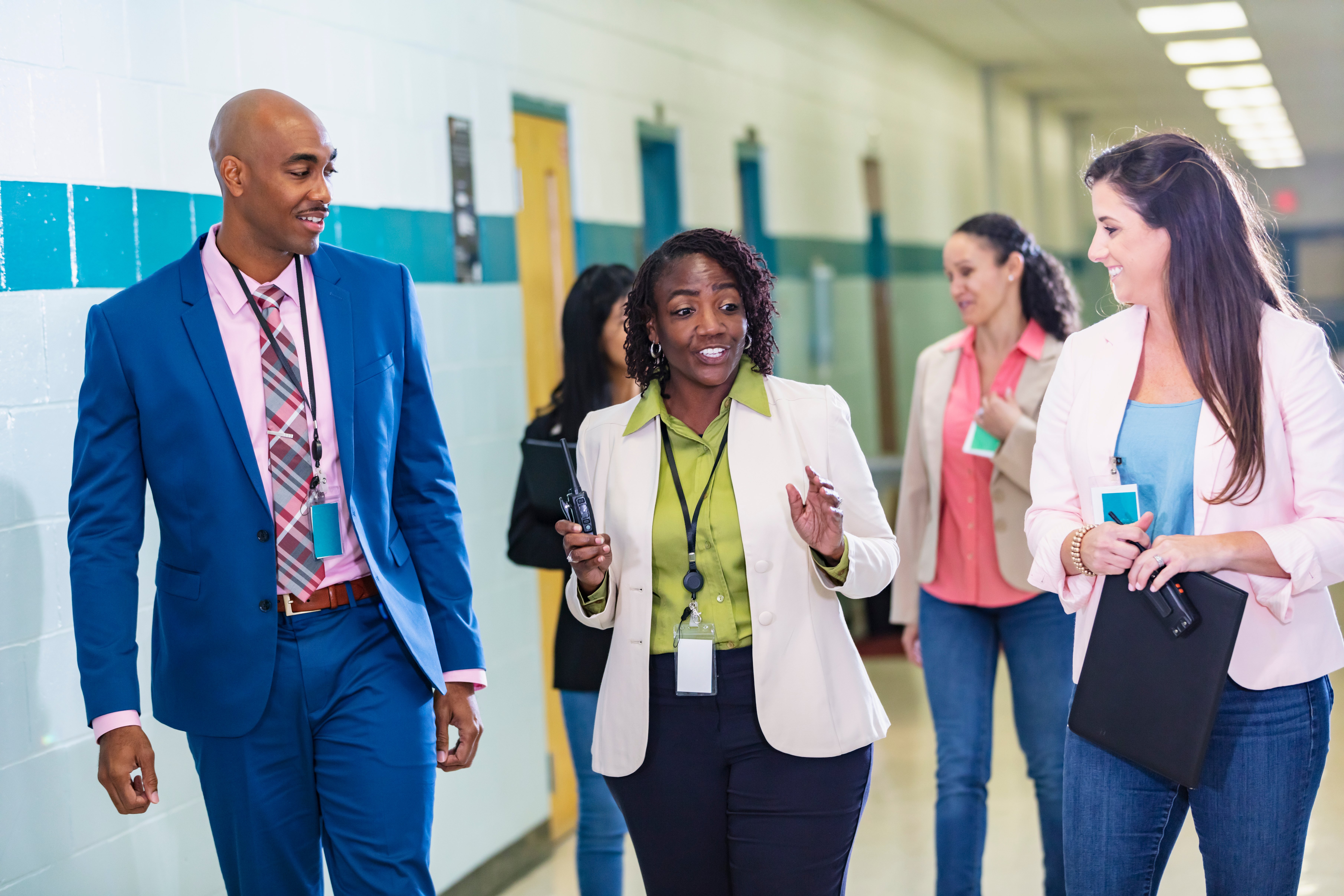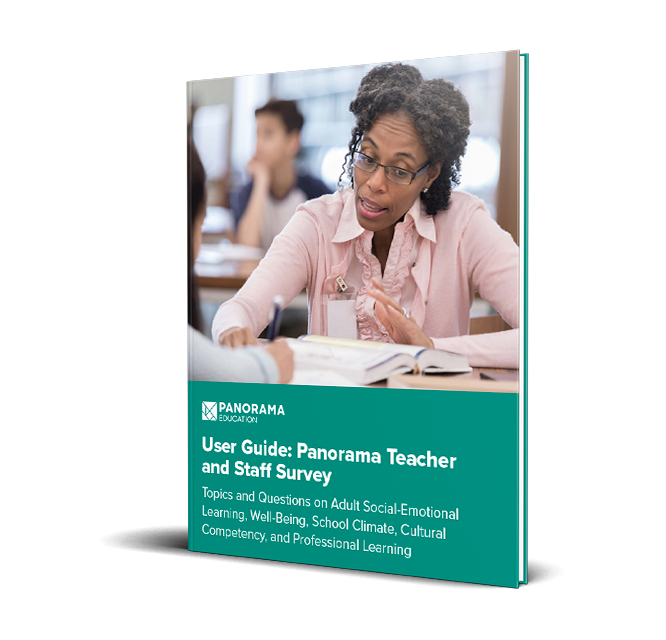Professional development plays a vital role in the growth and success of educators. It offers educators the opportunity to learn new skills and build their proficiency with education tools. But not all professional development programs are created equal, leaving many educators feeling like PD isn’t a valuable use of their time.
How can administrators develop professional learning that challenges and engages attendees?
We asked current and former educators (some of whom are now Panorama team members!) for their take on what makes good professional development. Read on for the qualities of effective professional learning to apply to your own district.
Watch: Professional Development With Durham Public Schools, NC
Relevant
Know your audience! Professional learning is most beneficial if it is applicable to the attendee’s role, current needs, and challenges. Educators should be able to draw connections between what they are learning with what they are doing every day.
Retired learning experience designer Julie Mori says, “Professional development must be relevant by asking educators for their suggestions.” An educator survey can be a useful tool for gathering input when planning professional development.
Another common response was about requiring the wrong people to attend a PD session.
“I was a former school counselor, and a lot of my PD had nothing to do with the work I did day to day,” says Eric Hunerdosse, current Panorama team member. “I think the more that districts can provide tailored PD, the better. That may be a heavier lift than a ‘one-size-fits-all’ model, but it provides more opportunity for engagement and growth for all.”
When PD is relevant, educators are empowered with tools to improve their practices in pursuit of student achievement.
Purpose-Driven
What is the “why”? Make sure your PD session includes clear learning objectives so attendees know 1) why they’re there, and 2) what they should get out of it. Connect the objectives back to your district’s mission and vision for student success.
“Give the background of why they are receiving the training and how they are expected to use the information," says former educator Lisa Hitmar. “Help them understand how the topic you are teaching them is going to help them in their job and with their students.”
Just like in the classroom, a session must have a clear agenda with easily attainable goals, adds former district administrator Dr. Rexanne Hill. If your expectations are too high, attendees will leave feeling overwhelmed and discouraged.
Engaging
Whether your PD is online or in-person, it must be engaging enough to keep educators’ attention. When educators are actively engaged, they are more likely to absorb and retain information, making it easier to apply what they've learned in their classrooms.
Spice up your session by mixing in a few of these:
- Hands-on activities
- Collaborative discussions
- Workshops
- Simulations
- Brain breaks & movement breaks
- Turn & talk
- Independent time
Developing an engaging session is even more crucial if you’re delivering in-person learning. Our LinkedIn followers specifically pointed to how in-person sessions need to be interactive. Curriculum Specialist Terri Williams cited the dangers of a live session comprised of only a PowerPoint slide presentation. Yawn!
 Panorama LinkedIn poll asking "Do you prefer virtual or in-person professional learning/development?
Panorama LinkedIn poll asking "Do you prefer virtual or in-person professional learning/development?
Out of 441 votes, 56% voted for virtual, 44% voted for in-person.
>>Want to share your take on education topics with us? Follow us on social media!
Digestible
TMI! Educators can shut down with information overload if you don’t keep the “new” to a minimum. Ambitious trainers should avoid trying to fit as much learning as possible into the available time. This approach can be a case of diminishing returns.
“Include breaks, and slow down if it’s a live session,” says Carol Allen, middle school teacher. “If the facilitator is going too fast, I get frustrated when they don’t give me the opportunity to ask questions.”
Speaking of digestible, bonus points if those breaks include snacks—even for online learning!
For asynchronous professional development, Gordy Baxter, Staff Development Administrator at EduTech, encourages “bite-sized learning” divided into chunks. By including touch points throughout your training delivery schedule, facilitators can gently keep educators on track.
Adaptable & Accessible
Just as educators strive to meet the diverse needs of their students, so too should PD. Educators have varying levels of experience, so customize your offerings to the learner’s familiarity with the subject.
Additionally, professional development should provide a range of options to be inclusive of educators with diverse learning needs. For example, if your PD involves video, make sure you provide accurate closed captions. Allow educators to choose from various formats, such as online courses, workshops, or written materials, that align with their learning style. Some educators might flourish in group discussions, while others may prefer self-paced learning modules.
Remember that educators are human, so they may not always have the capacity for certain types of PD after a full day of work. Educational leader Shuntina T. says, “I just don’t have time to leave the building during the day or the mental capacity to stay after school for PD.”
Above all, give educators the chance to choose the pathway that aligns best with their professional goals.
Actionable & Ongoing
Professional learning doesn’t end once the session is over! One-time workshops or brief training sessions can provide valuable insights, but PD must be ongoing for long-term growth.
Effective programs provide opportunities for educators to engage in continuous learning and reflection. This can be achieved through follow-up sessions, mentoring relationships, online communities, or access to additional resources.
“If possible, have a follow-up Q&A session once they have started using what they learned about,” suggests Hitmar. This could even be as simple as sending a Google Form and then emailing a summary of your findings.
Ideally, Hill says, “professional development should result in changes in teacher practices and improve student learning outcomes.” Gauge the impact of the training and make necessary adjustments. Evaluating the outcomes and collecting feedback from participants ensures that professional development remains relevant, responsive, and aligned with educators' evolving needs.
Takeaways for Your PD Planning
Effective PD provides educators with the support and resources they need to grow professionally, improve teaching practices, and ultimately enhance student learning outcomes. Investing in high-quality professional development is an investment in the future of education.
>> Did you know? On average, educators rate their Panorama learning experiences as over 90% favorable compared to other professional development. Download our PD guide.
At Panorama, we take pride in building high-quality professional development grounded in adult learning theory, research, and best practices. Our Teaching & Learning Team facilitates exceptional learning experiences to inspire and equip your team with the tools they need.







